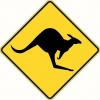
Originally Posted by
Michael Ray Smith

His rationale is that you also need to get modern replacement blades and cap irons for them, which are expensive, and those planes all use the same blade.
Not meaning to be critical of you Michael, but your friend's rationale is, to me, faulty on multiple levels. The advice seems to be for newbs on a budget, yet the logic basically encourages one to unnecessarily spend money in a couple ways.
Replacement blades are in no way a need. They can be nice to have, but they are in no way shape of form a requirement. Not only does this advice encourage someone to spend money on aftermarket blades that are not required, but it then encourages them to buy more expensive planes to accommodate that expenditure. On top of that they'll have to change the blade around every time they want to use another plane.
Again, not intending to be critical of you or your friend, but personally, I would strongly discourage anyone to follow that advice based on that logic. If one just likes those sizes better, more power to them, and if someone likes and wants to use new blade/chipbreakers...well I'm all for that (they can certainly shorten the learning curve for someone learning to get an old plane working), but that logic seems to stem from a fundamental lack of understanding/experience using vintage Bailey planes.
Sorry that sounds harsh...its really not meant too...but I, personally, just really think that is bad advice, and, respectfully, I really would discourage anyone from adhering to that logic. YMMV.
Last edited by Chris Griggs; 03-14-2014 at 7:30 PM.
Woodworking is terrific for keeping in shape, but it's also a deadly serious killing system...






 Reply With Quote
Reply With Quote








